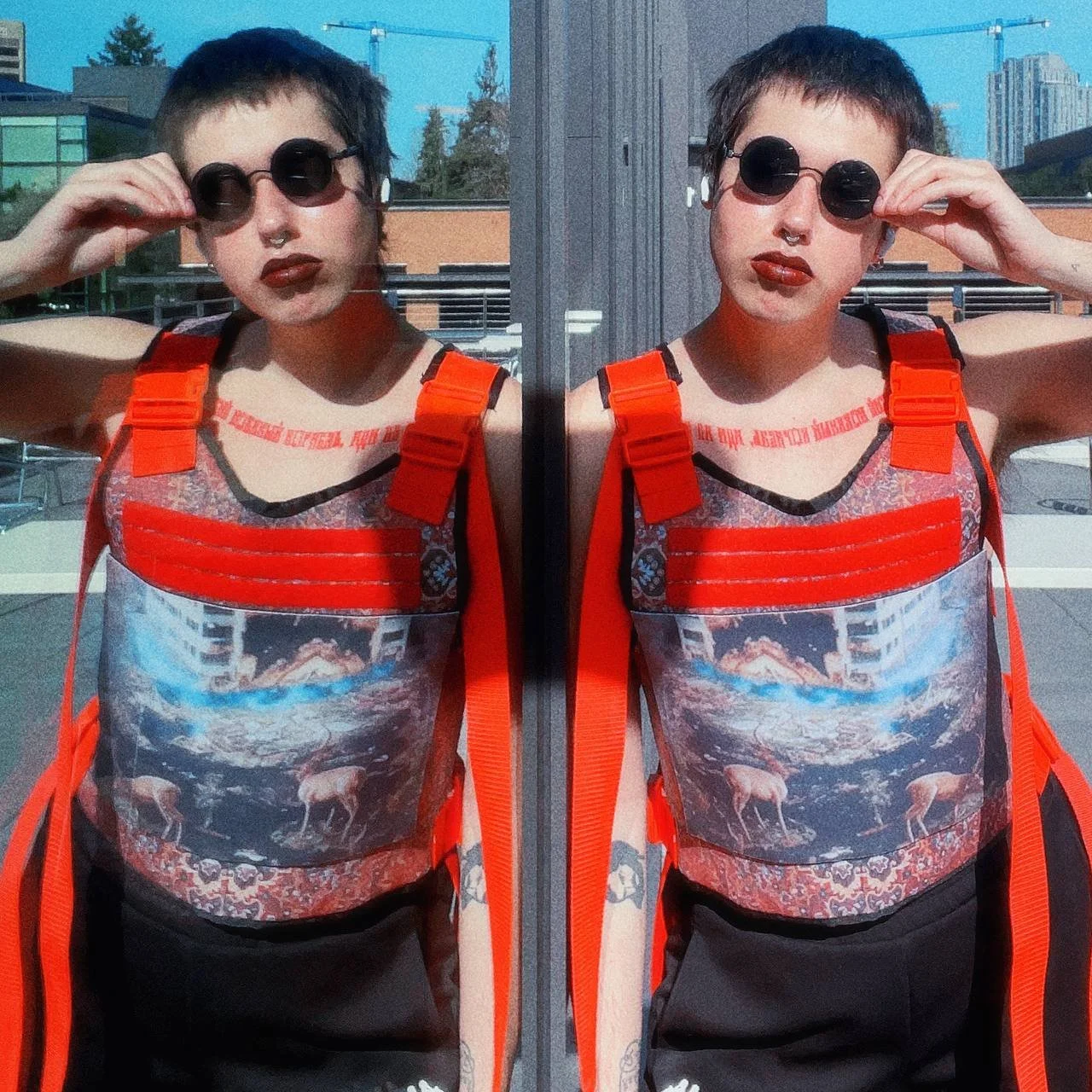Kirigami Antenna by Afroditi Psarra and Zoe Kaputa
As an exploration of alternative forms for antennas, Afroditi Psarra and I designed and tested antennas inspired by the practice of Kirigami. Kirigami is a variation of Origami, where flat paper is cut and folded to form 3-dimensional shapes. Kirigami has recently been adapted to be used in industrial or technological processes, such as as shipping materials. In a similar fashion, we're interested in the impact different 3D kirigami shapes have on the effectiveness of the antennas at reading EMF signals, along with the frequencies at which we could read them at.
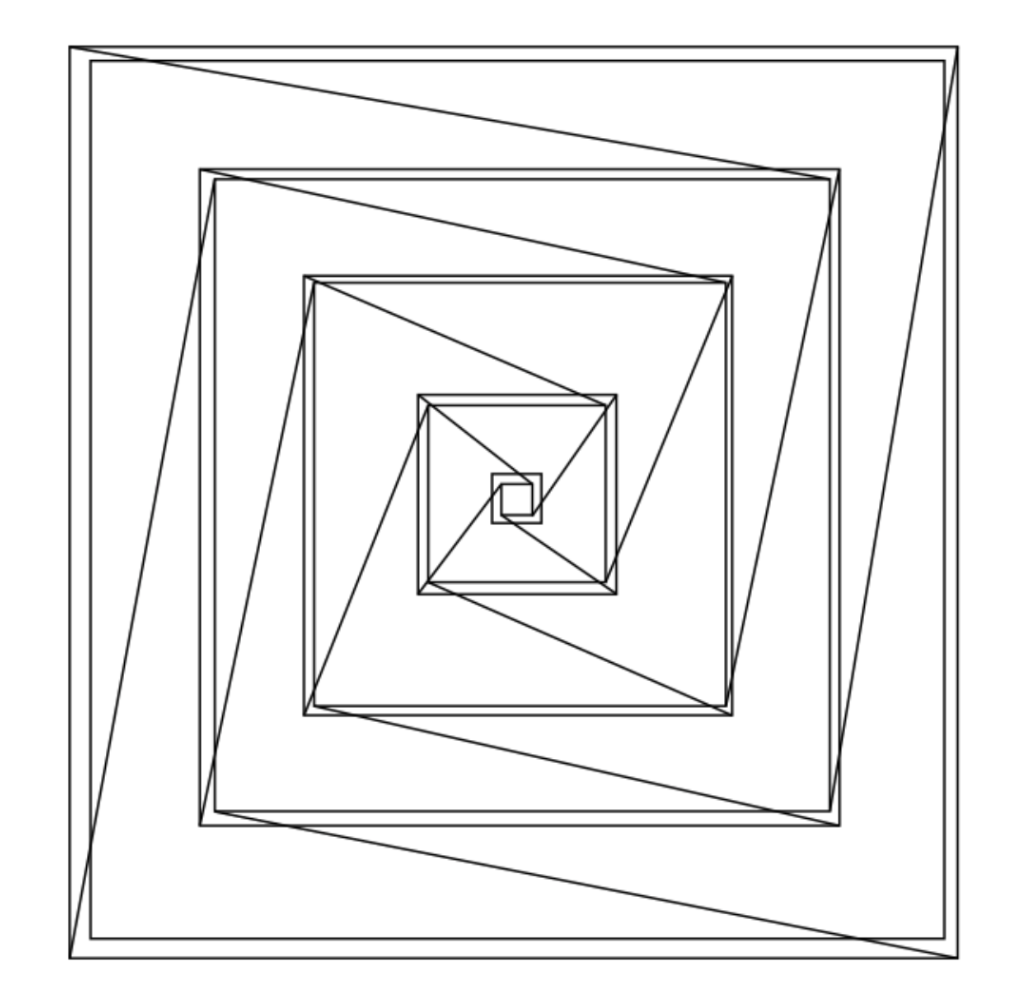
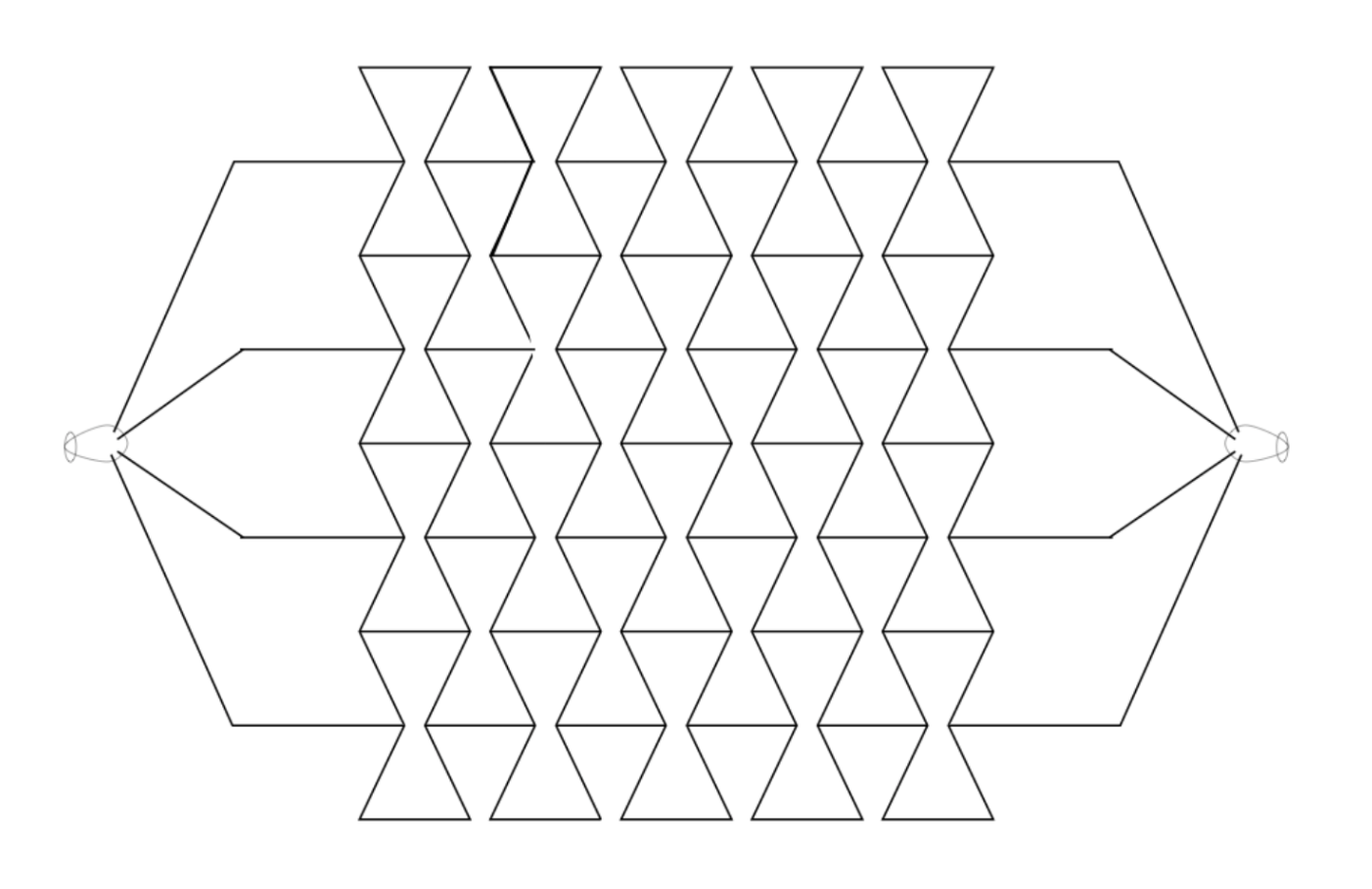
We began the process of developing 3D kirigami shapes using designs developed with the help of Jennifer Mankoff, who is currently testing the effectiveness of kirigami shapes as sensors. We transferred these shapes to Floriani, an embroidery software, and embroidered them with Madeira HC-40 conductive thread onto dissolvable paper. For most patterns we used a steil stitch, with three base backstitch lines beneath, in order to make the lines of each structure hold their shape.
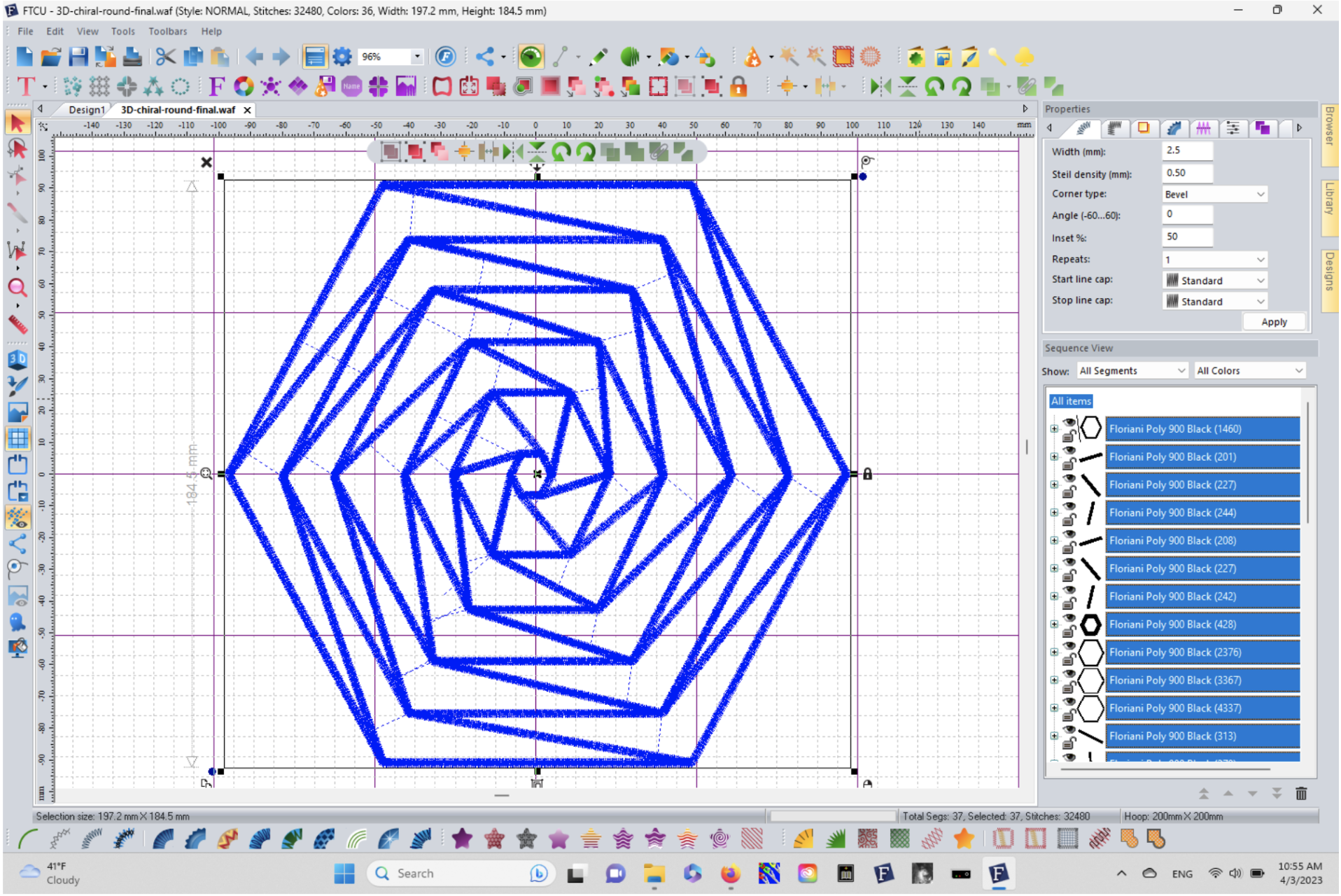
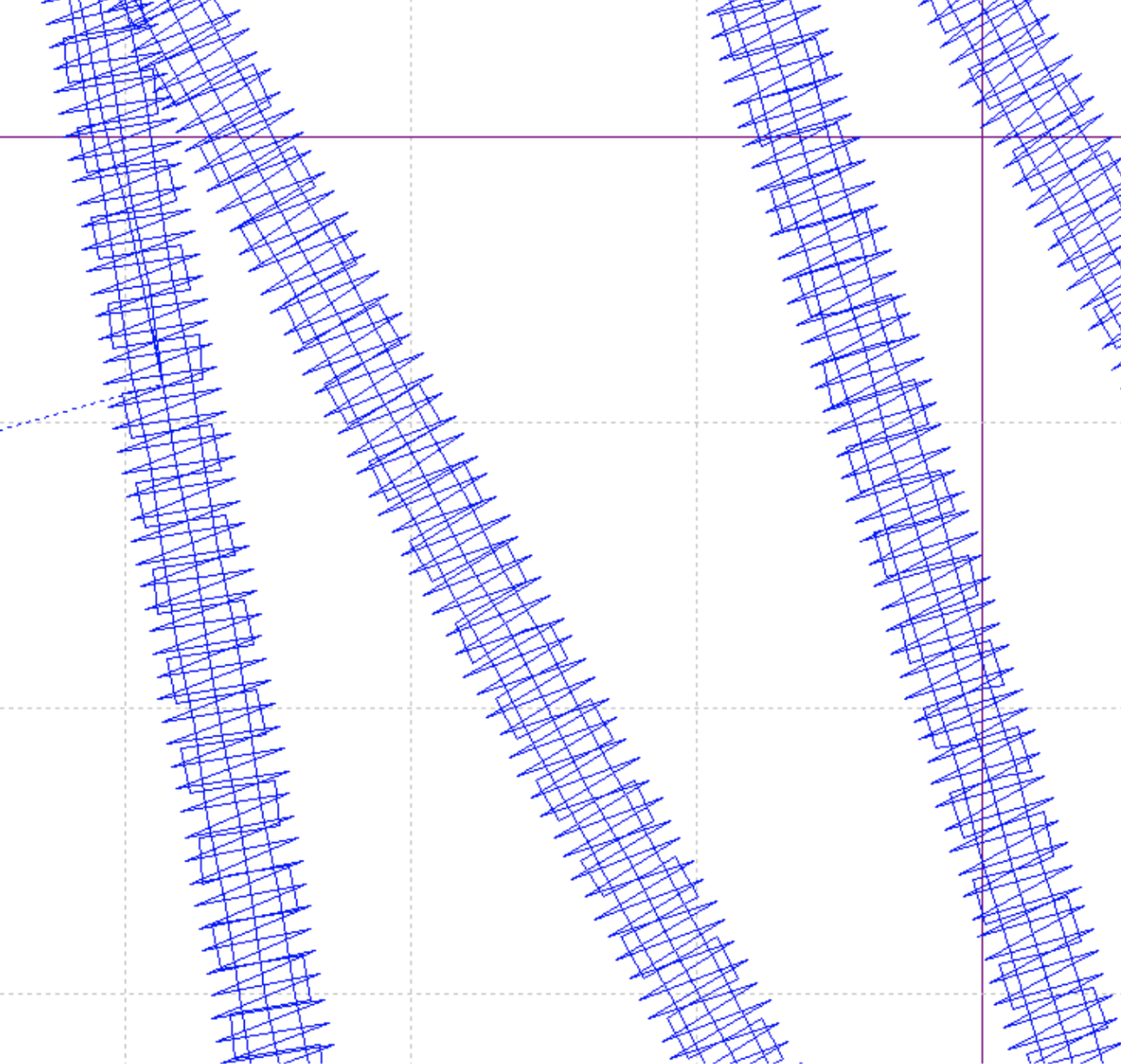
Once embroidered, the paper was washed off, leaving just the shapes created from conductive thread, which could then be positioned into 3D structures. This process involved experimenting with different scales, stitch types, and stitch widths to find structures that could hold their 3D shape when printed. Afroditi and I specifically experimented with designs of larger sizes and alternative stitching techniques at the ZSK Embroidery Research and Training Center in Tukwila, WA, with the help of Topher Anderson.
After finding several viable shapes, we tested the effectiveness of these structures as antennas using a vector network analyzer, measuring their S11 values at various frequencies. S11 is a measure of how much power is reflected from the antenna. Negative peaks of S11 under -10 decibels typically correspond to frequencies at which the antenna can pick up radio signals. We found that the kirigami antennas are able to pick up several frequencies, which change slightly depending on the orientation of the structures.
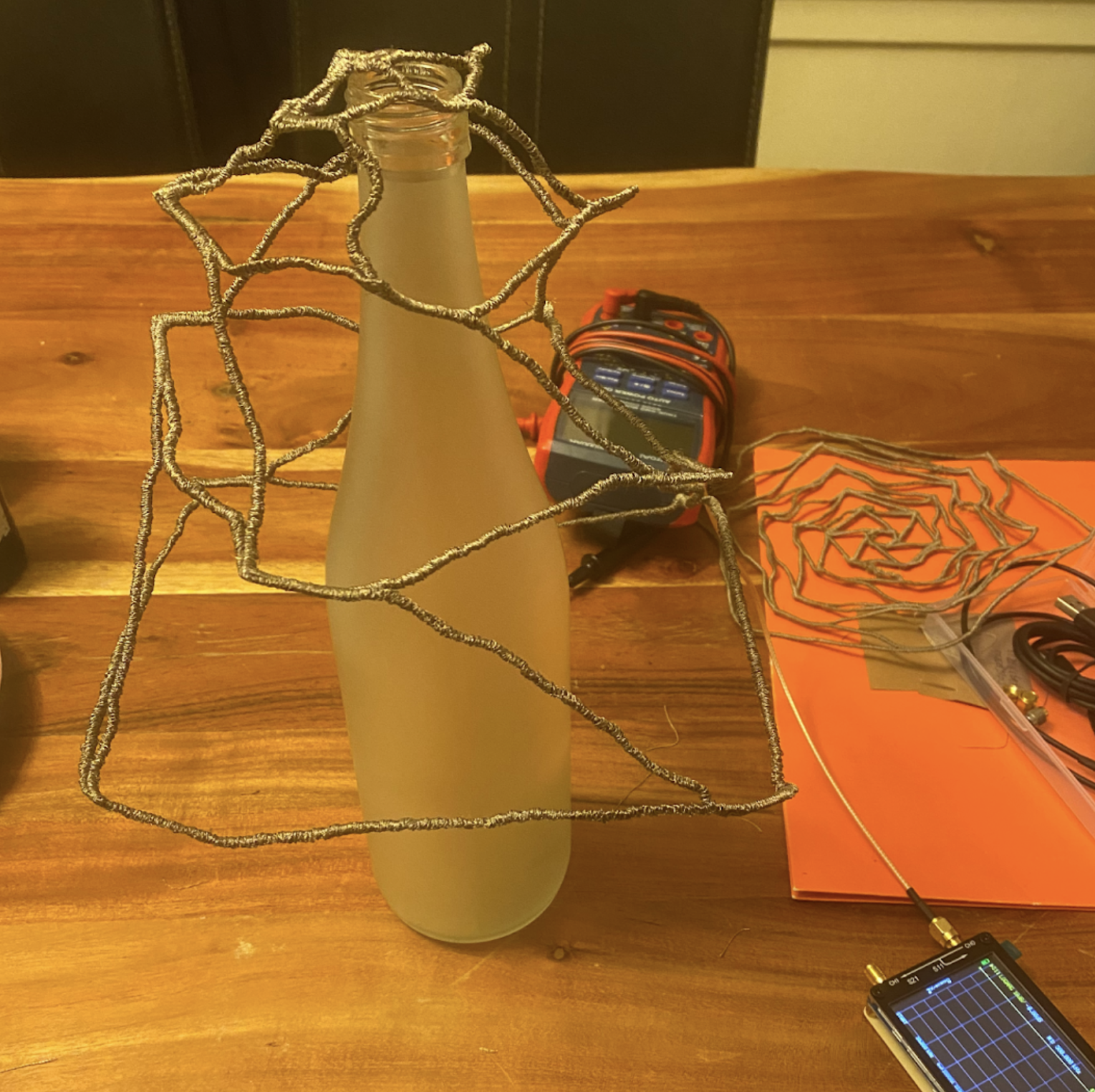
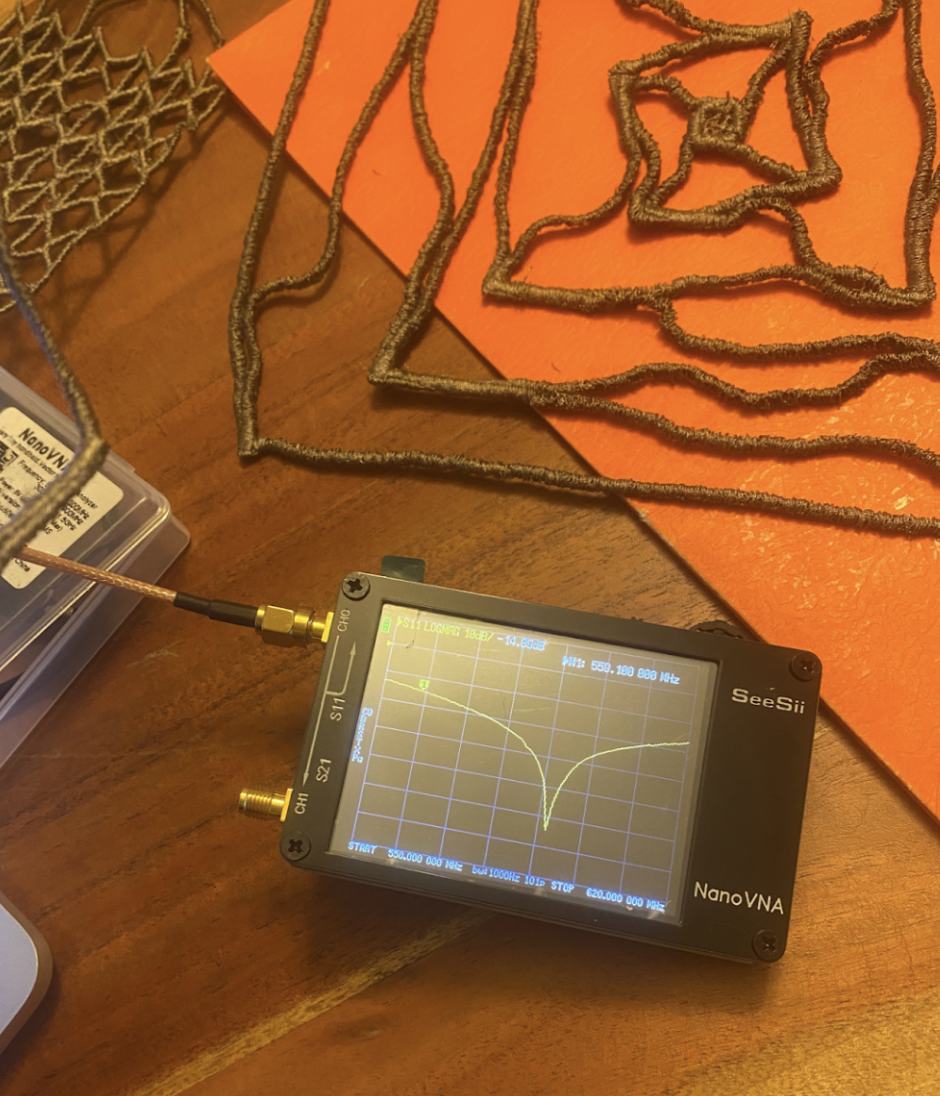
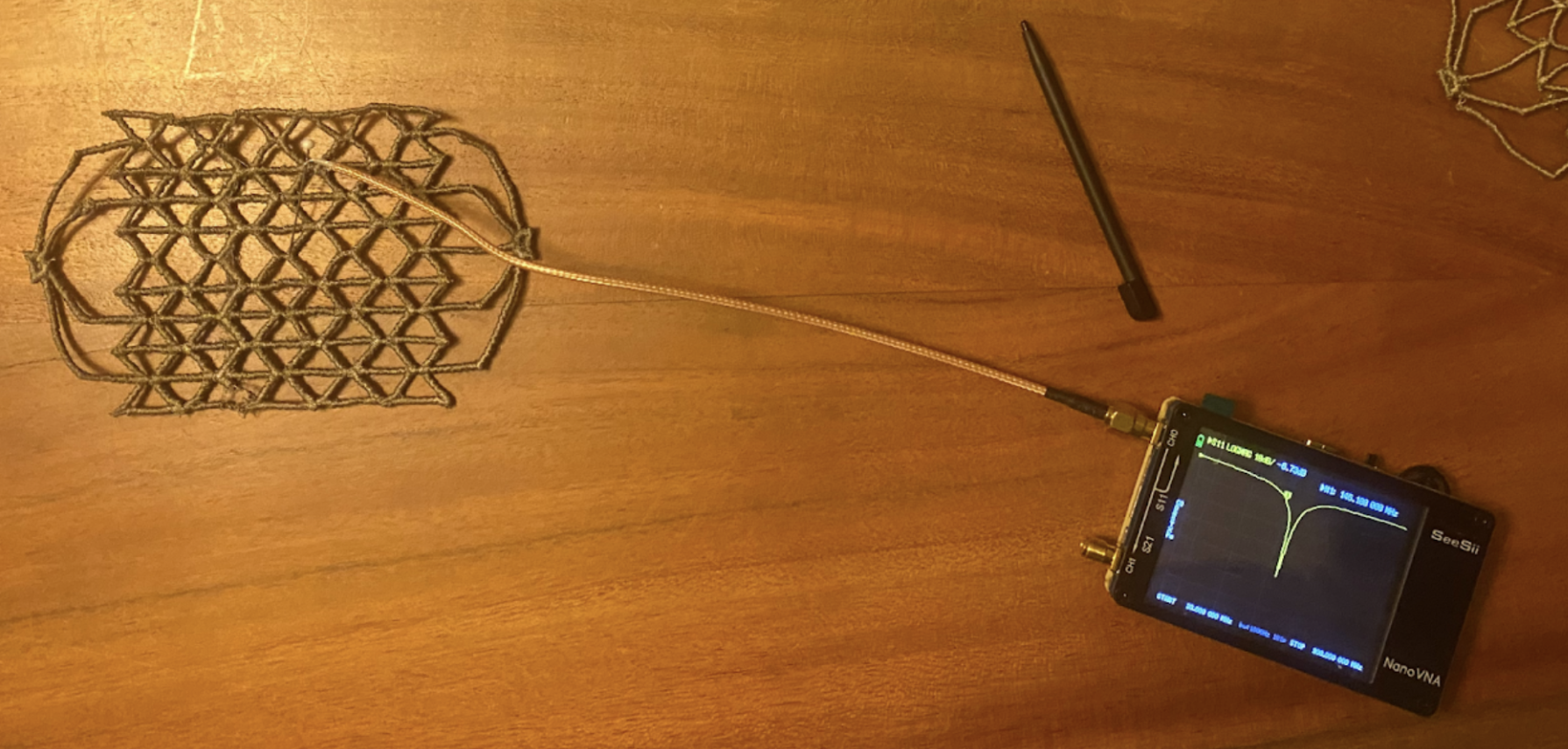
Afroditi Psarra used four of these antenna prototypes with a software-defined radio in a Nonseq Curators Concert performance at the The Chapel performance space in the Good Shepherd Center, Seattle, WA. Moving forward, we will explore new kirigami shapes and perform more testing on the S11 peaks of various structures.


